Top 10 Email Automation Platforms That Transform Your Marketing in 2025
Updated on
Published on

Email automation platforms are becoming a breakthrough solution where companies can send personalized, time-sensitive messages to their audiences without manual intervention. These advanced tools have changed the businesses' methods of developing and nursing leads, maintaining loyal customers, and conversion of businesses using brilliant and data-based communication methods.
The power of the right email automation tools will be able to transform your marketing to be proactive not reactive and scale growing meaningful relations with genuine audiences. If you belong to a startup in the process of creating a brand or an enterprise streamlining intricate journeys, it helps to know right now what automation will look like in 2025 and beyond in order to design a successful marketing strategy.

What is Email Automation and Why Does It Matter?
Email automation is the ability to send customized, individualized emails to the subscribers seeking special attention according to the specific triggers, actions, or timelines without any manual operation. It will be like having a personal marketing assistant that never goes off duty but keeps an eye on all the customer activities, and when the customer does something wrong, then it sends the right message at the right time.
The technology operates on a high-level trigger-based system designed to understand user behavior, preference, and active patterns.
When a subscriber does a particular thing like a purchase, leaving a shopping cart, or clicking a certain link, the automation platform can instantly send a corresponding email. Superior segmentation options enable such platforms to segment subscribers by multiple demographics, purchase and usage history and levels of engagement, and a myriad of other ways, so that the message will always be meaningful to the intended recipient.
The Role of Email Automation for Businesses
Email automation evens the playing field regardless of the size of the business, giving small companies the ability to deliver enterprise-quality customer experiences.
- It increases efficiency – Automatically sends the messages, thus it saves on the manual work.
- Personalizes at scale – Personalizes content to audiences and improves engagement.
- Enhances timing – Sends messages at their most opportune times.
- Enhances customer relationships – Strengthens leads and sustains loyalty down the line.
- Streamlines the campaign results – Monitors the data to make perceptual advances.
- Fosters revenue increase – Promotes conversions due to the use of perceived relevant communication.
Top 10 Email Automation Platforms for Every Business
1. EngageLab
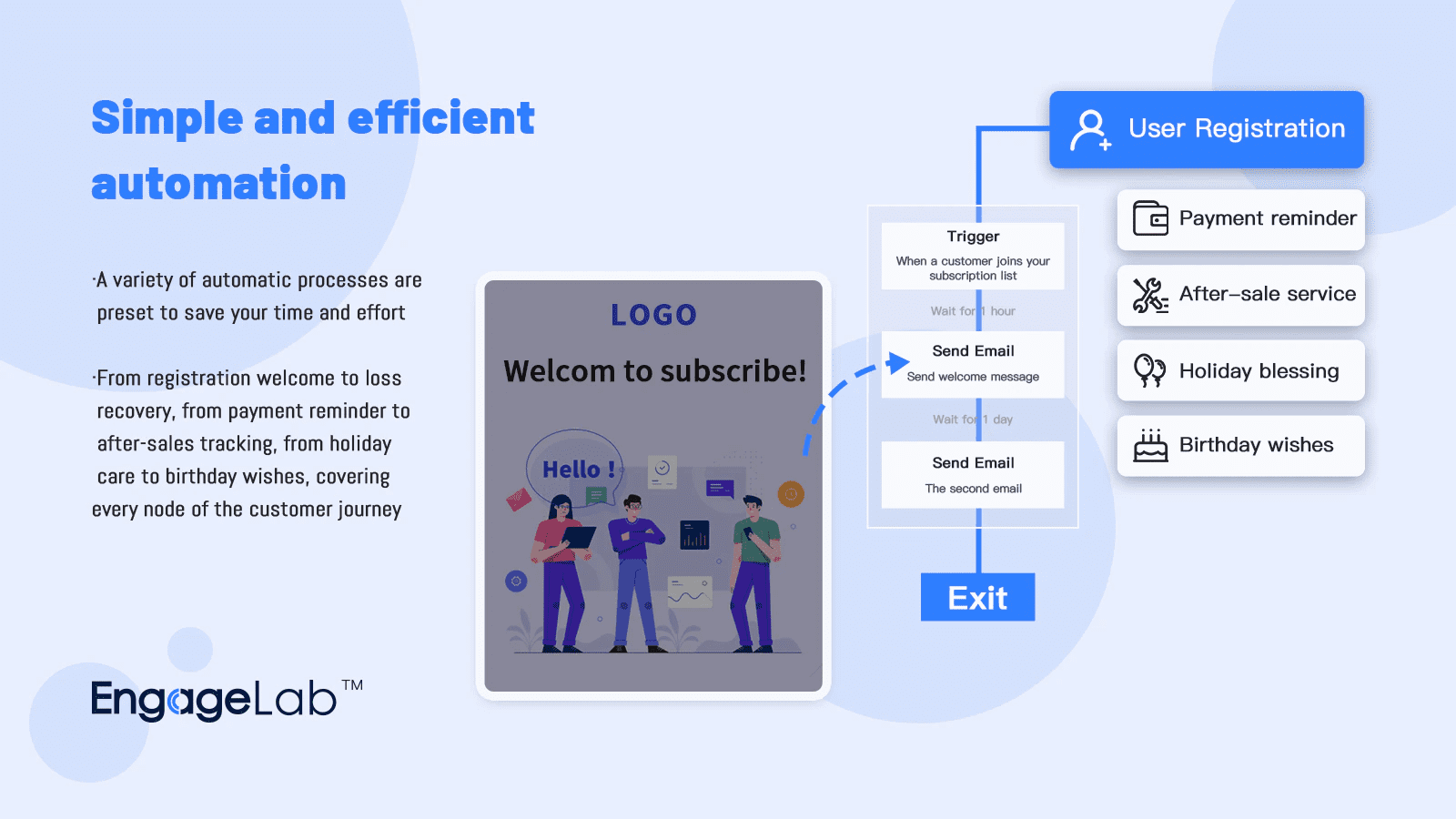
EngageLab is a full-featured omnichannel communication tool that does not simply replace an ordinary email automation system. This new solution will work seamlessly with all email, SMS, push notifications, and in-app messaging, so it's great in that it also gives the business a whole new way to engage with their customers.
Key Features:
- High technology behavioral targeting and real-time personalization
- Automation cross-channel workflows and intelligent messages sequence
- Complete analytics dashboard with predictive reports
- International infrastructure and support of international companies
- API-first architecture and integrations opportunities
- A/B testing in any communication channel
The unique selling point of EngageLab is the creation of integrated customer experience by building multiple points of touch that assure the consistency of messages irrespective of customer preferred method of communication.
2. Mailchimp
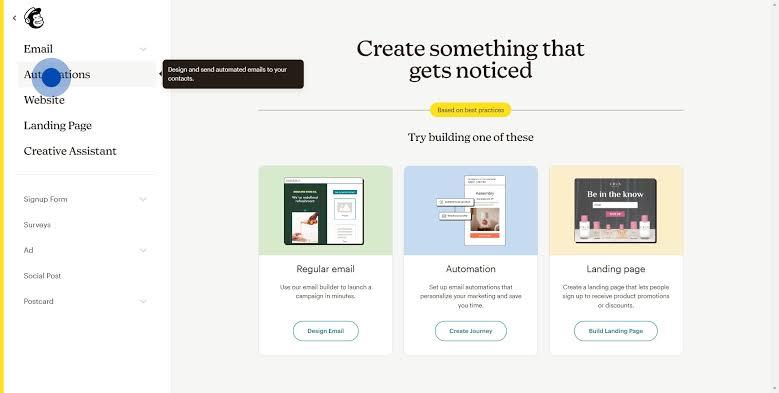
Mailchimp continues to be among the easiest to use email service providers, which is why it is an awesome option to explore when starting out emailing or when a business is small. Its easy-to-use drag and drop interface, together with its wide range of templates, makes it easy to create a campaign.
Key Features:
- Pre-configured automation workflows to cover the most common situations
- Advanced segmentation based on behavior and preferences
- Landing pages and form builders
- Integration with social media advertising
- Clear reporting and analytics
- Mobile app to manage campaigns anywhere
3. HubSpot
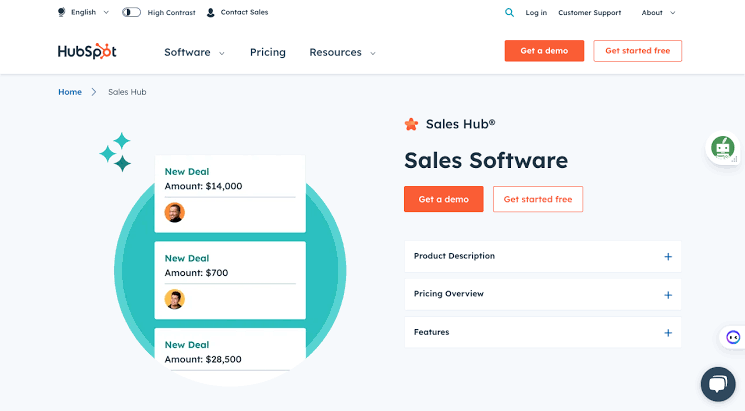
The email automation tools that HubSpot has to offer are included in its "full CRM ecosystem," enabling companies to implement a holistic solution that does all the marketing. It streamlines lead capture, allows seamless integrations, and boosts efficiency with automated workflows.
Key Features:
- Lead scoring and progressive profiling
- Powerful workflow automation with branching logic
- Smooth integration with CRM systems and personalized messages
- Content optimization suggestion
- Timeline tracking of the contacts
- Integration with sales and support systems
4. ActiveCampaign
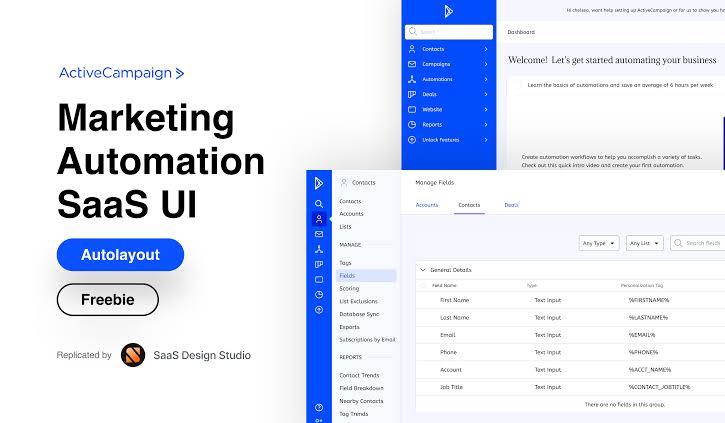
ActiveCampaign has bundled email marketing with a CRM offering, and with complex automation features that approach those of enterprise packages. It also allows segmentation to categorize the audience. Moreover, customizable templates and a pre-built library of automation recipes help the businesses save time.
Key Features:
- Image-friendly automation creator that includes conditional logic
- Smart sending and content matching
- Sophisticated segmentation and marking system
- Tracking the sites and accomplishments-pressured ratchets
- Intelligent send time optimization
- A/B testing to automatize background
5. ConvertKit
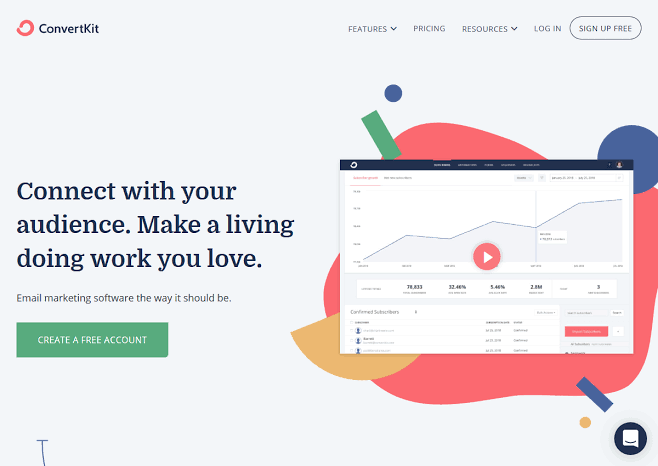
ConvertKit is designed specifically towards creators and online businesses and balances ease of use with powerful features of automation. It allows custom workflows with triggers and actions. Users can also enjoy seamless editing with automation workflow.
Key Features:
- Tag-based subscriber management system
- Visual automation builder with the most user-friendly interface
- Advanced subscriber tagging and segmentation
- Customizable opt-in forms and landing pages
- Integration with the most popular creator tools
- Detailed track of the subscriber journey
6. GetResponse
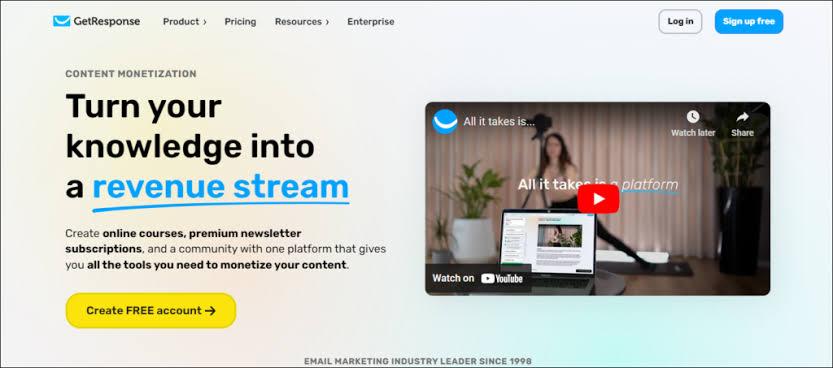
GetResponse offers an all-around marketing solution, with powerful email marketing automation, and a variety of special features such as webinar integration. It provides email campaign tools and landing pages, webinars and sales funnels within the same suite. Automation workflows on the platform support custom customer journeys according to the preferences and actions of customers.
Key Features:
- Drag-and-drop design of an automation workflow
- Schedule-based and event-based triggers
- The extended list segmentation possibilities
- Available in-built webinar leveraging service
- Form and landing page fabrication capabilities of the solution
- Robust analytics and reporting
7. Drip
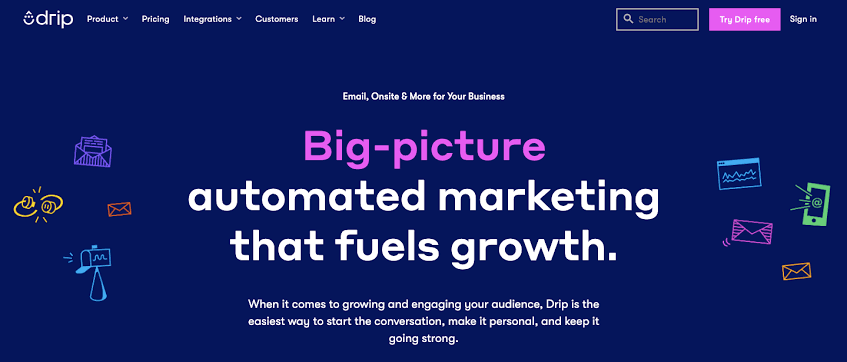
Drip works exclusively with e-commerce email automation, providing tools and functions that deal with the peculiarities of online retailers and online marketers. It assists in creation of behavioral and life cycle segments that are dynamically refreshed so you can send timely, personalized emails to the subscribers and customers. It's more tailored for e-commerce businesses and has a pre-built library of templates.
Key Features:
- E-commerce-oriented automation templates
- Advanced tracking of customer lifetime value
- Behavioral-based email triggers
- Multi-channel campaign possibilities
- Revenue attribution reports
- Deep integrations with e-commerce platforms
8. Sendinblue (Brevo)
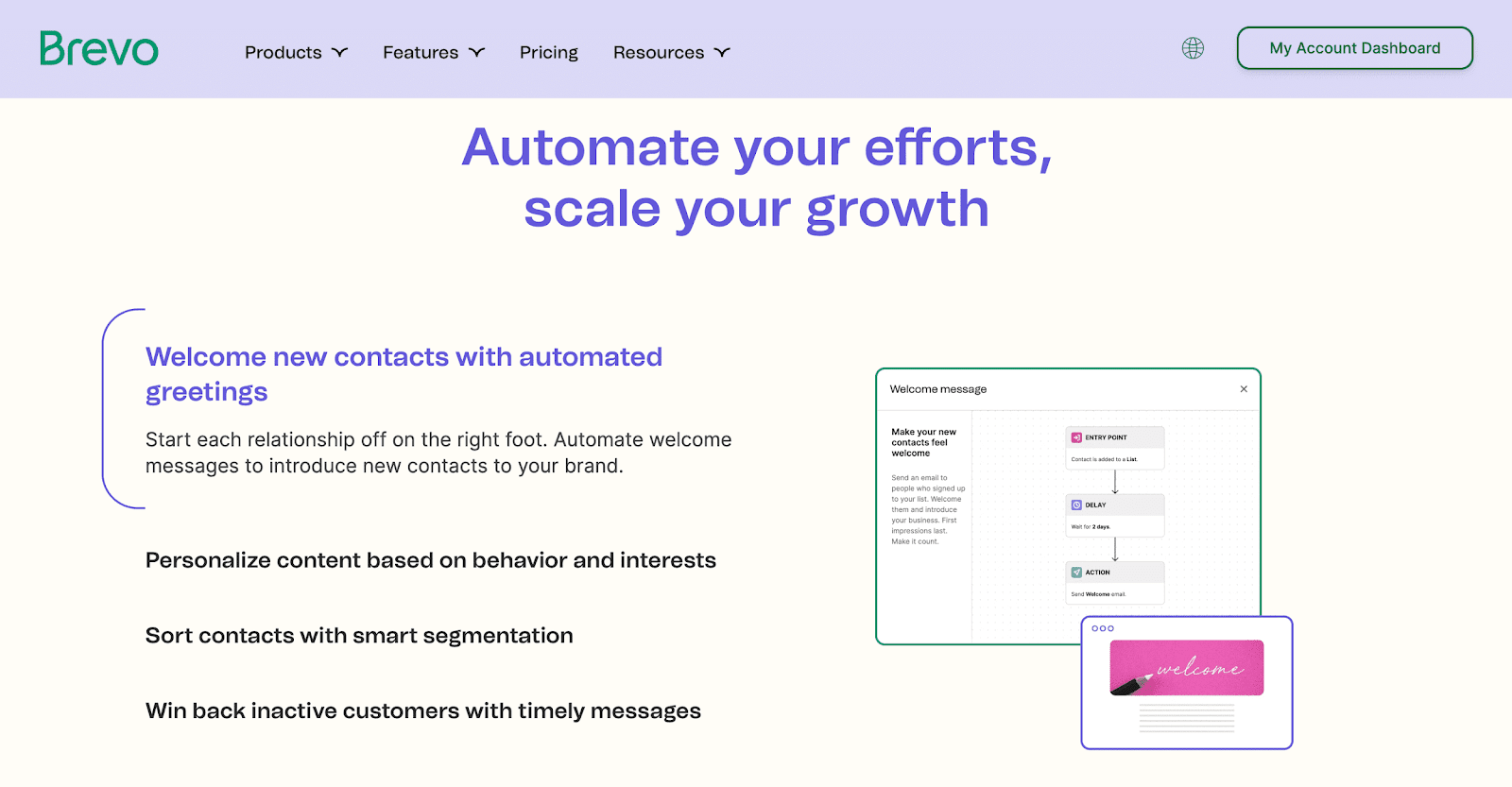
Brevo is the multi-channel option of marketing automation, which involves a combination of email, SMS, and chat in a single platform. It allows personal delivery campaigns, automation of marketing and transactional messages on one dashboard. Brevo also has CRM and advanced analytics functionalities that guide business in enhancing conversions by cultivating leads.
Key Features:
- Email drag and drop designer
- Strong contact segmentation
- Transactional email functionality
- SMS marketing features
- Live chat and chatbot functionality
- Full contact management system
9. Klaviyo
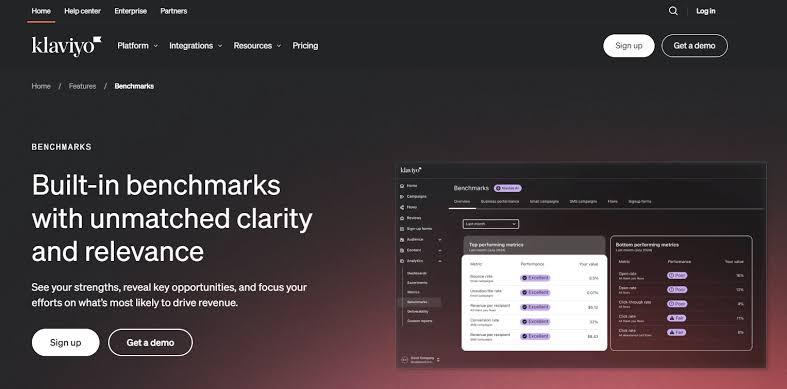
The company has realized that Klaviyo is the tool that e-commerce businesses turn to since it provides extensive integration with leading shopping platforms, as well as a powerful personalization engine. Klaviyo supports sophisticated segmentations, predictive analytics, and dynamic content and enables marketers to deliver personalized emails and SMS depending on behavior, purchase history, and preferences.
Key Features:
- Customer behavior prediction analytics
- Sophisticated segmentation based on products purchased
- Product recommendation engines
- Cross-channel work flow automation
- Revenue and attribution
- Out of the box e-commerce work flow automation
10. Constant Contact
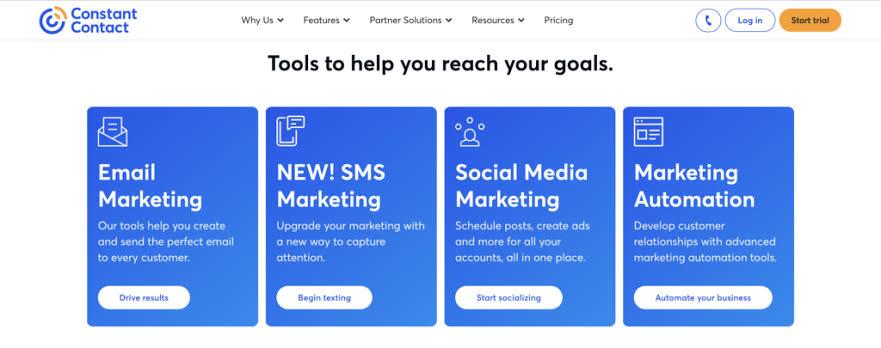
Constant Contact pays attention to the user's simplicity and reliability, which is its strong feature when small business or non-profit organizations are considered. It enables businesses to more quickly build and engage their audience through landing pages, social media lead ads and more. It builds customer relationships by allowing communication across text, email and social channels from one platform.
Key Features:
- User friendly email designer and templates
- Contact lists manager tools
- Simple automation workflows
- Customization of events
- Social media marketing
- Over-all customer service systems
How to Choose the Right Email Automation Platform for Your Goals
Choosing an email automation platform may involve paying close attention to various aspects that are in line with your business goals and objectives that are important to the operations of your business.
Step 1: Set Your Budget and ROI Goals
First, determine the specific budget that covers not only the platform cost, but the implementation working hours, training materials, and the possible integration costs, as well. Take into consideration the anticipated ROI—costlier platforms commonly are worth the investment in the form of a better deliverability rate, better segmentation, and analytics that directly relate to revenue creation.
Step 2: Evaluate Desired Capabilities/Functionality
Develop a list of desired capabilities/functionality and v. nice-to-have capabilities. Crucial capabilities tend to consist of automation‐based workstreams, segmentation tools, analytics reporting, and template libraries. More advanced ones may be predictive analytics, AI or machine learning optimization, or specific e-commerce connectivity.
Step 3: Grade Ease of Use and Learning Curve
Take into account the technical skills of your staff and the amount of time that your staff has to invest in learning the platform. It also has some platforms with drag-and-drop format that is easy to understand by the amateur and others with advanced customization where one has to know technical skills and hence is more elaborate.
Step 4: Consider Integration Ability
Look at the level of integration of potential platforms with other technology used such as CRM systems, e-commerce systems, analytics, and social media control software. Smooth integrations will avoid data silos and maintain the same customer experience across the touchpoints.
Step 5: Think About Scalability and Scaling Potential
Pick a platform that can scale with your business, dealing with higher subscriber loads, more complicated automation processes and other enhancements as your requirements expand. Think about pricing levels and other factors that can be a constraint in the future growth.
Step 6: Quantify Deliverability and Support Qualify
Research the deliverability levels, spam block capabilities, and reputation methodologies used on any given platform. Also, assess the level of customer support, what channels are available, what are the response times, and how thorough the supporting documentation and training material is.
FAQ
Q: What's the difference between email marketing and email automation platforms?
The platforms used in email marketing are aimed at designing and delivering newsletter emails to a subscriber list, and the workflow features commonly found in email automation tools contain advanced capabilities designed to drive the delivery of a customized email. More advanced segmentation, behavioral tracking, and sequences of multiple stages of campaign are usually available through automation platforms.
Q: How much do email automation platforms typically cost?
The rates depend largely upon the number of the subscribers and other functionalities. Small companies begin with basic plans that cost about 10-30 dollars a month, up to enterprise packages that could cost hundreds or even thousands of dollars a month. All the platforms present tiered pricing, depending on the number of subscribers to their services, as well as higher costs of other features such as predictive analytics or high-end integrations.
Q: Can small businesses benefit from email automation platforms?
Absolutely. Automation emails help bring a given field to the same playing field, as small businesses are now able to reach high levels of personalization in terms of providing professional customer experiences on par with larger businesses. Automation saves time and boosts engagement, as well as helps smaller businesses nurture leads without large marketing teams.
Q: Are there any industries where email automation doesn't work well?
The acceptance of email automation in different industries is high in general; however, the efficacy of the process depends on the audience and regulators it needs to comply with. Strictly-compliant industry (healthcare, finance) can require the specific platforms with higher freedom of security. B2B industries may not display the same levels of engagement as B2C and thus demand adjusted strategies and not a change of platforms.
Conclusion
The 2025 world of email automation presents unexplored potentials in building a significant customer relationship on a large scale with a crucial non-compromising aspect of personalization. Whether we think of a turnkey solution such as EngageLab that offers an omnichannel toolset, or a more niche platform that caters to particular business types like an online store or a particular industry like hospitality, the choices have never been more abundant when it comes to tools to revolutionize your marketing tactic.
Regardless of what feature is at the top of your list, be it advanced behavioral targeting, an integration with your e-commerce, or something user-friendly, the platforms mentioned in this guide are the most suitable for any contemporary marketer who wishes to make the most out of their email marketing.







